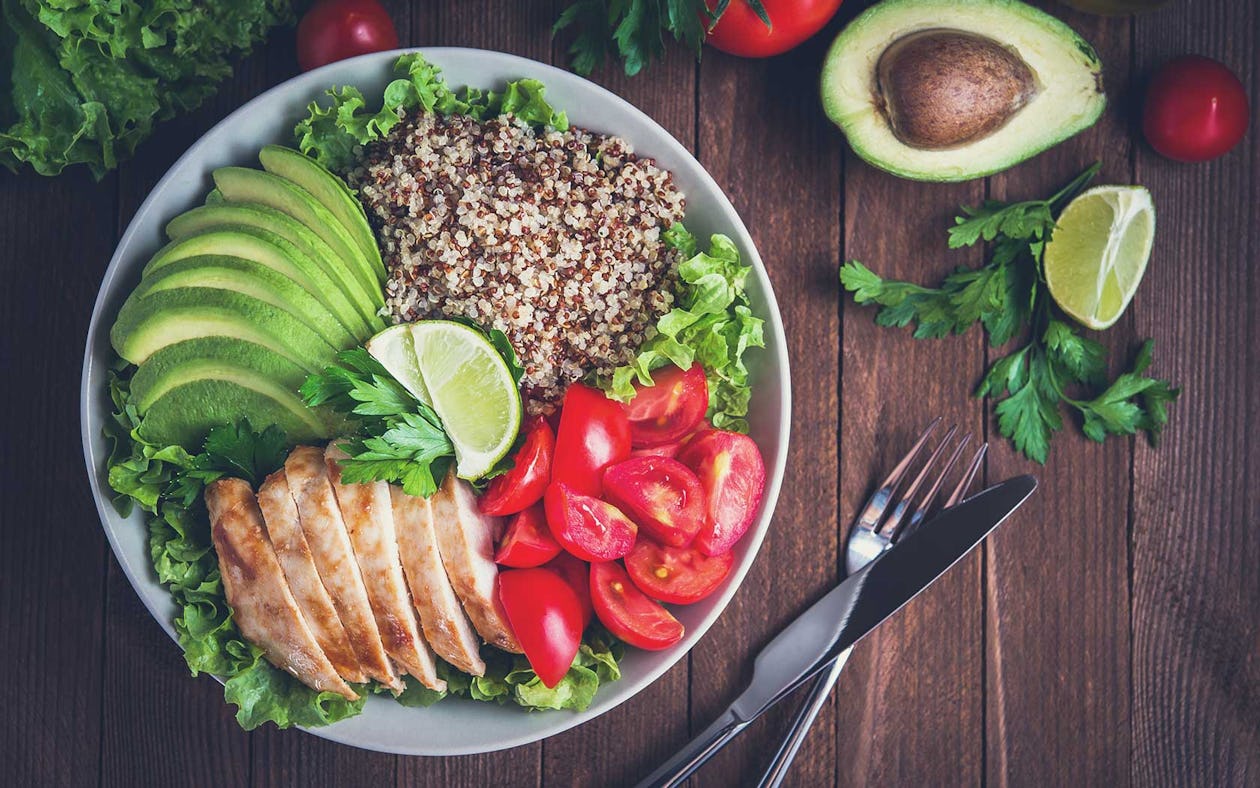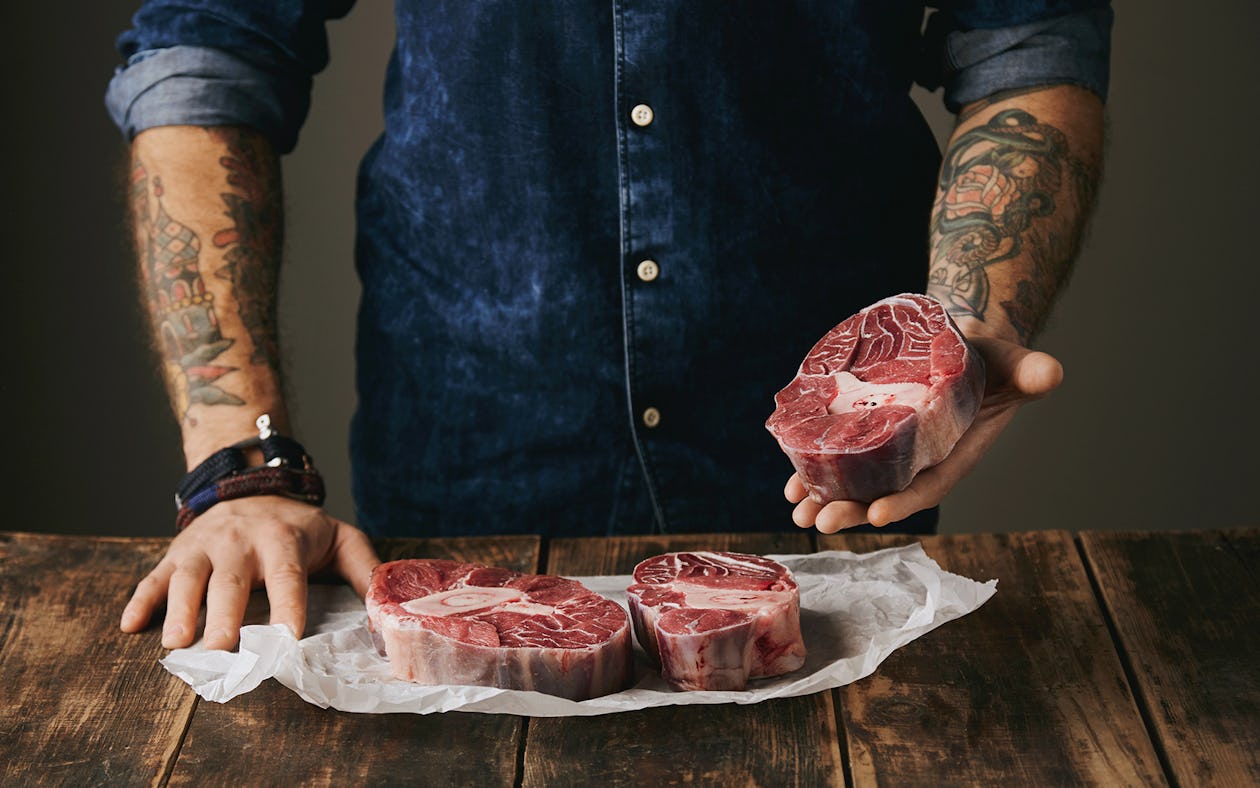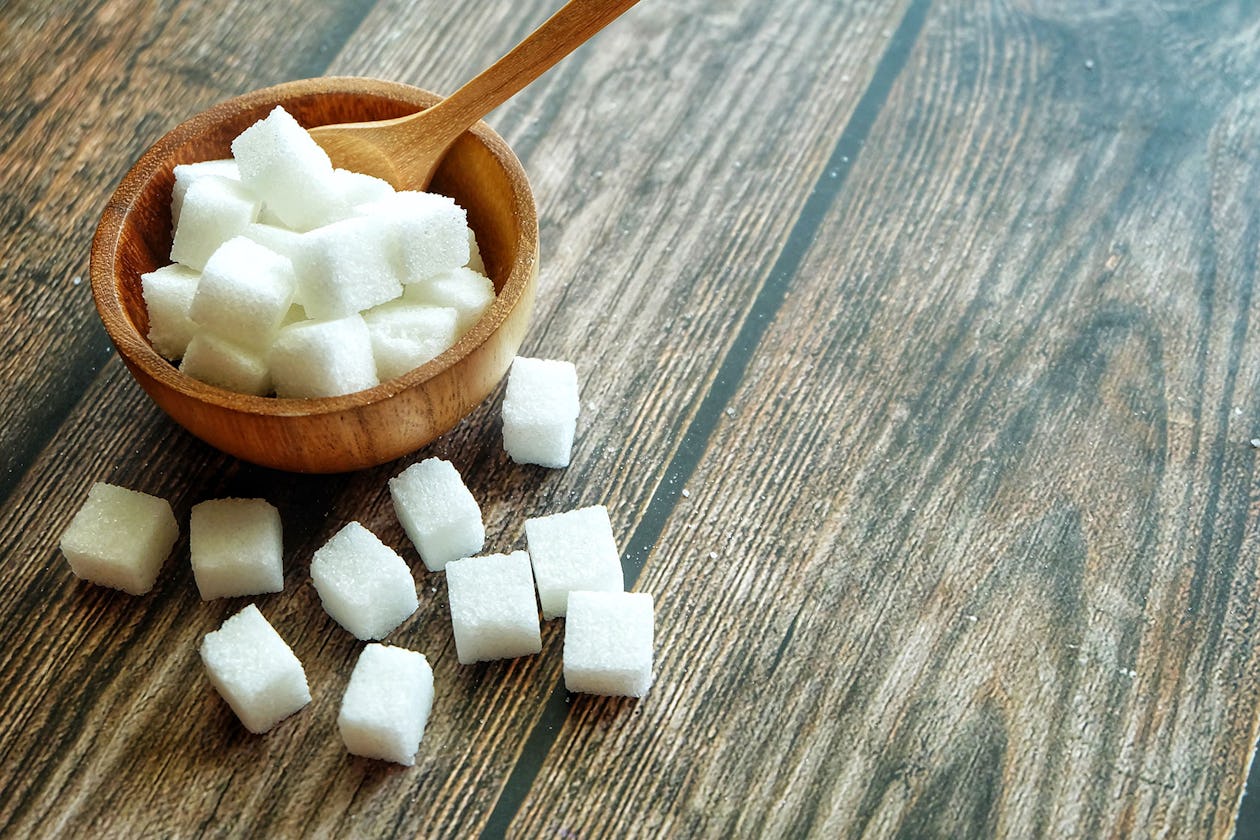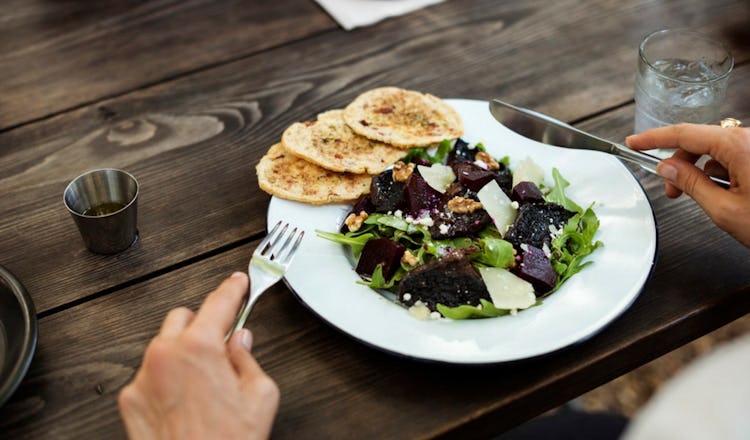Take one look at an MMA fighter’s physique, and there’s no doubt these athletes put health at the top of their priority list. Which isn’t a surprise when you learn they usually train three times per day and have a thorough recovery protocol of cryotherapy, ice baths, and sleep.
When creating a nutrition program for these high-performance professional athletes, the most important factor is the quality of food. The mission is quite simple: We don’t count calories. We don’t count macronutrients. We count nutrients. A whole-food approach with a focus on nutrient density and variability.
Unlike Tom Brady’s diet, we do not shun nutritionally sound foods like mushrooms, coffee, and yogurt. Varying the types of food on a daily basis is key. For example, we included a variety of healthy fats from egg yolks to MCT oil to avocado to multiple animal fat sources.
This provided not only the necessary nutrients, but also the flexibility to not eat the same meal every day while feeling good, decreasing body fat, and (emotionally) enjoying the ride.
There are a variety of diet theories out there, but cutting out carbohydrates and sodium should never be considered for a professional athlete anytime during training camp.
Not consuming these essential elements will prevent a healthy water release, can cause mineral imbalances and can seriously impair energy levels and cognitive function.
Key players for any successful nutrition program is consistency, patience, dedication, and transparency with your nutritionist and self.
MMA Fight Diet Plan
Meal 1
â 1 tbsp. MCT oil or Emulsified MCT oil
â 1 cup (dry measurement) gluten-free rolled oats or 1/2 steel-cut oats OR 1 large sweet potato OR sprouted grain tortilla equivalent to 50g carbs (~2 large) tortillas
â 1 cup berries OR 1 whole orange/grapefruit/apple OR 1 small banana
â 2-3 tsp. raw, unfiltered honey (optional)
â 6 egg whites (approx. 1 cup liquid egg whites)
â 4 whole eggs OR 2 whole eggs + 1 organic, uncured, nitrate-free chicken/turkey breakfast sausage (low sugar)
â Vegetables of choice
Note
â For MCT oil: Mix or blend in coffee, drizzle on food after cooking, do not cook with this oil due to its low smoke point.
â Measure your oats dry. Cook your oats with water and cinnamon, if desired. Up to ½ cup non-dairy, unsweetened milk is fine to add on oatmeal. Add fruit to oatmeal if desired. Drizzle with honey.
â Saute vegetables (ex. spinach, peppers, onions, mushrooms, kale, etc.) in pan with a higher smoke point oil (like coconut or avocado). Add eggs & egg whites to pan, then scramble with vegetables. If you have bacon or sausage, feel free to saute with vegetable for more flavor
â If having sweet potatoes, you can dice and make into a delicious breakfast hash with onion, brussel sprouts and/or root vegetables, etc.
Meal 2
â 7 oz. bison, 90/10 lean beef, wild game, salmon OR Chilean sea bass
â 8 oz. red-skinned potato OR 1 cup of par-boiled rice or white rice
â 2 cups vegetables (cooked and/or raw)
Meal 3
â 8 oz. chicken breast, turkey, any white fish (including canned tuna–look for wild tuna for a lower mercury content)
â 5 oz. sweet potato + ½ cup black, kidney or garbanzo beans OR ½ cup of brown rice, wild rice, black rice, quinoa + ½ cup beans or lentils
â â
avocado OR 1 tbsp. Extra virgin olive oil (drizzle on after cooking)
â ½ cup full-fat Greek or Skyr yogurt, plain
â 2 cups vegetable
Note
Recipe Idea: Make a healthy chili in a slow-cooker! Use ground chicken/turkey + rice/quinoa/potato + canned crushed tomato + onion/carrot/celery + spices/herbs + beans + broth + top with avocado and full-fat plain yogurt (tastes just like sour cream)
Flex Shake (Within 30 Minutes After Your Workout)
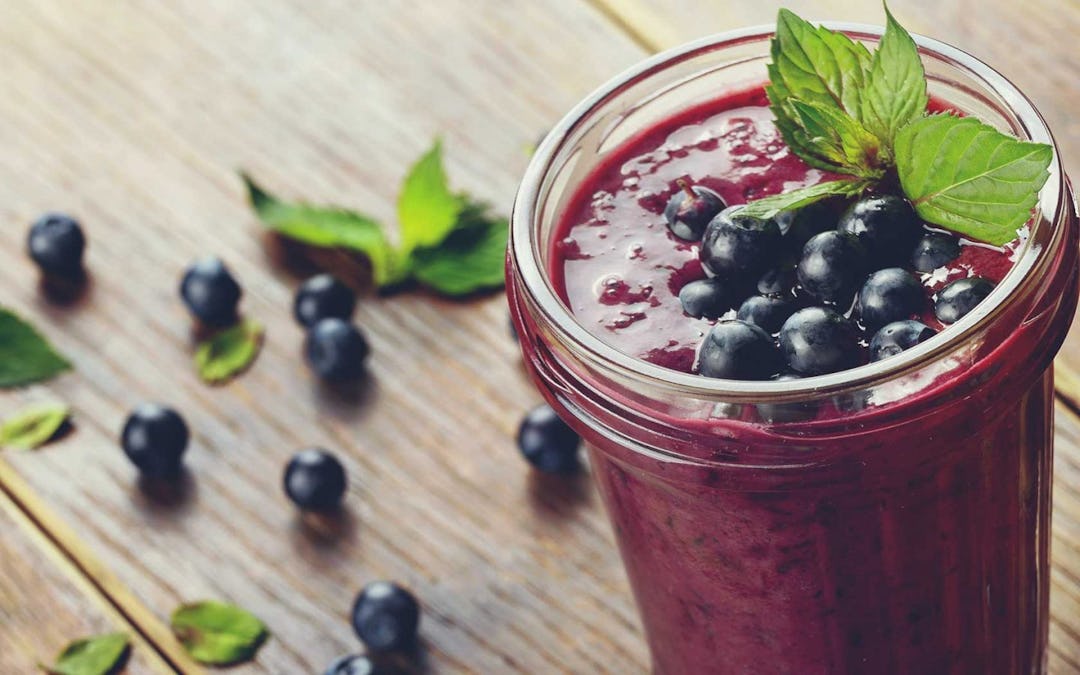
â 1 cup non-dairy milk, unsweetened
â 1 cup berries or mango/pineapple
â 1 banana
â ½ cup dry oats
â 40-50g protein (whey protein isolate or vegan protein powder, 2 scoops)
â 1-2 tbsp. cacao powder OR 2 tbsp. cacao nibs (for magnesium)
â 1 tbsp. nut butter of choice
â 2 tbsp. chia seeds
â 2 cups spinach, optional
*Blend with ice and enjoy.
Note
Optional “free” add-ons for nutrients & varied flavor profile: maca powder, cacao powder/nibs, Himalayan salt, coconut water, cold brew, Matcha Chai Tea Latte.
Meal 4
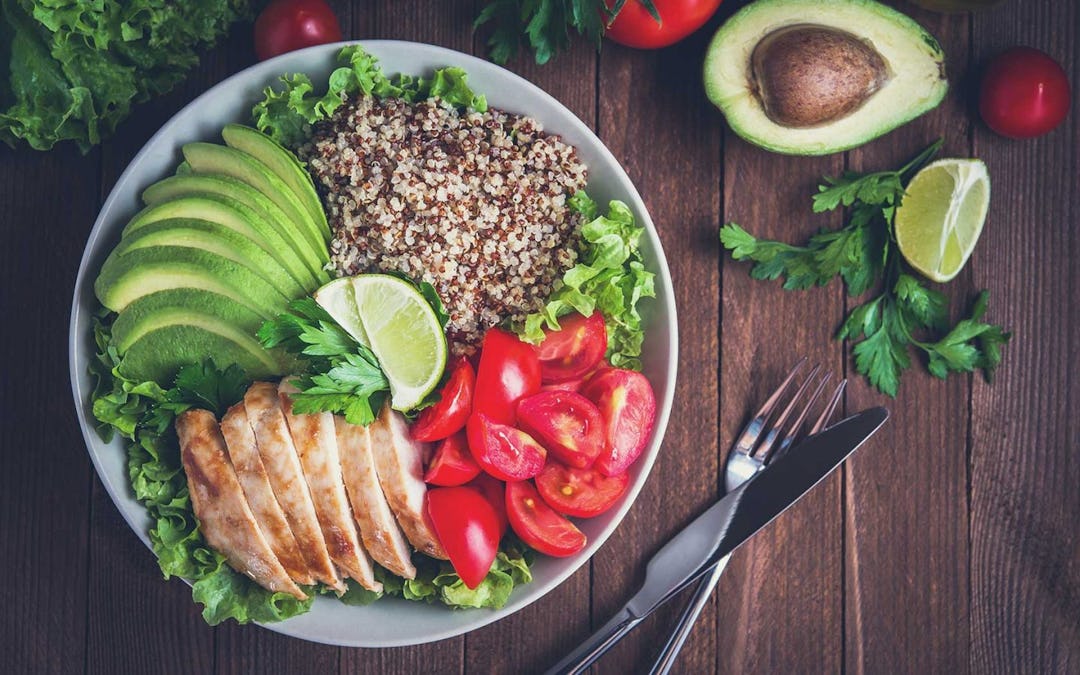
â 8 oz. chicken breast, turkey breast, any white fish (including canned tuna)
â 1 ½ cup quinoa, any type of rice or 8 oz. sweet potato/red-skin potato
â ½ avocado
â 2 tbsp. olive oil, unrefined olive oil (drizzle on after cooking or use as salad dressing)
â 2 cups of green veggies (raw and/or cooked)
â 2 tbsp. vinegar of choice OR fresh lemon (if having a salad)
Note
â 1 tbsp of following are OK for taste on salads: nuts, unsweetened dried cherries/cranberries, harder cheese like parmesan.
Flex Snack (have on hand when hungry or need a pick me up)
â ¼ - ½ cup raw, unsalted nuts (walnuts, almonds, pecans, Brazil nuts etc) + 2 tbsp. goji berries or piece of unsweetened dried fruit
OR
â 1 Oatmega bar
OR
â 1 cup full-fat yogurt + 1 toast at Onnit Cafe
Extra Notes
Note: If you prefer 3 meals per day plus a shake, we can disperse “Meal 3” among the other 3 meals to make each individual meal larger by volume.
Morning Start:
â Always weigh yourself empty (no food, no water, no coffee) and dry (no clothes) for consistent monitoring.
â Start your day (before eating) with 16 oz. room-temperature water with juice from ½ lemon. This is to help clear your GI tract, for the antioxidant capacity and has shown to increase the absorption for some minerals from food.
â Note: there is no scientific evidence for the alkaline-forming benefits of lemon water.
Before Bed:
â Drink serving of Natural Calm for magnesium.
Post-workout Hydration:
â Drink “Recover” from the Onnit Cafe (pure coconut water + 1 tbsp. coconut Emulsified MCT oil + 1 tsp. Himalayan salt)
â Drink minimum 1 ½ gallon of water per day until you cut water weight.
â Always use Himalayan salt & iodized salt. Alternate. Salt all meals until you cut water weight.
â All spices and fresh herbs are fine and encouraged to flavor meals.
Approved Condiments:
â All-natural ketchup (no added sugars)
â All mustards (no added sugars)
â Avocado-oil based mayo (1 tbsp/ day)
â All vinegars
â Hot sauce
â Natural (no sugar added) salsas (refrigerated aisle, not by chip section)
Recommended Probiotic-Rich Food:
â Consume at least 3-5x/week: Low-sugar kombucha tea (look for <4g sugar per serving), yogurt included in meal plan.
â As much as possible: sauerkraut & kimchi (Add to eggs, meals, by the spoonfuls; I like the Smoky Kale Kraut by Wildbrine)
Recommended Daily Supplements:
â Total Human® (daily a.m. & p.m.)
â Total GUT HEALTH™ Pack (daily with largest meal of day)
â Shroom Tech® SPORT (3 prior to training)
â Total Strength + Performance (2 scoops prior to training)
â MCT oil (as directed above)
Recommended As-Needed Basis:
â VIRUTech® & Shroom Tech® IMMUNE for additional immune support when traveling (both in TPC for daily use)
â Krill oil (if you aren’t consuming fish)
Things To Keep In Mind:
Organic produce, pasture-raised poultry, antibiotic-free & grass-fed red meat & dairy, and wild fish is always encouraged.
The nutritional profile of organic produce and conventional produce does not always differ. The degree of pesticides and herbicides used on produce differs as well. Check out the Environmental Working Group website (EWG.org) for an annually updated list of the “cleanest” and “dirtiest” produce.
Keep track of your energy levels throughout day AND while working out. We’ll review energy levels, current weight, libido to see if there’s anything we need to adjust in your nutrition plan as necessary.
Be a boss. EVERY. DAMN. DAY.
